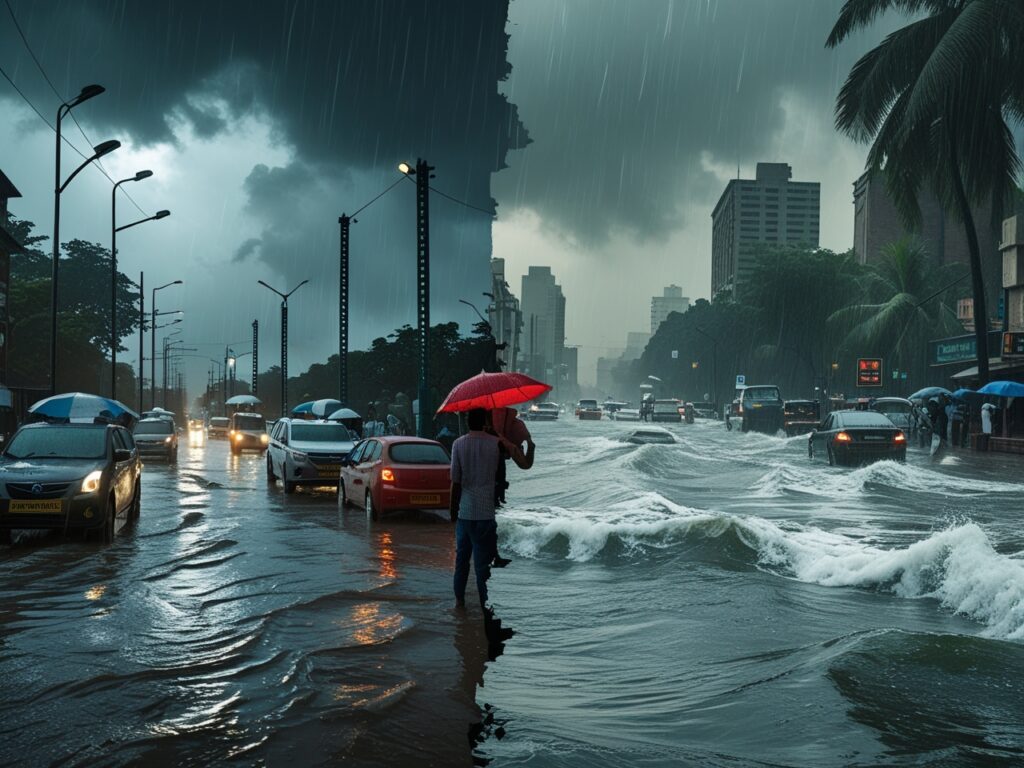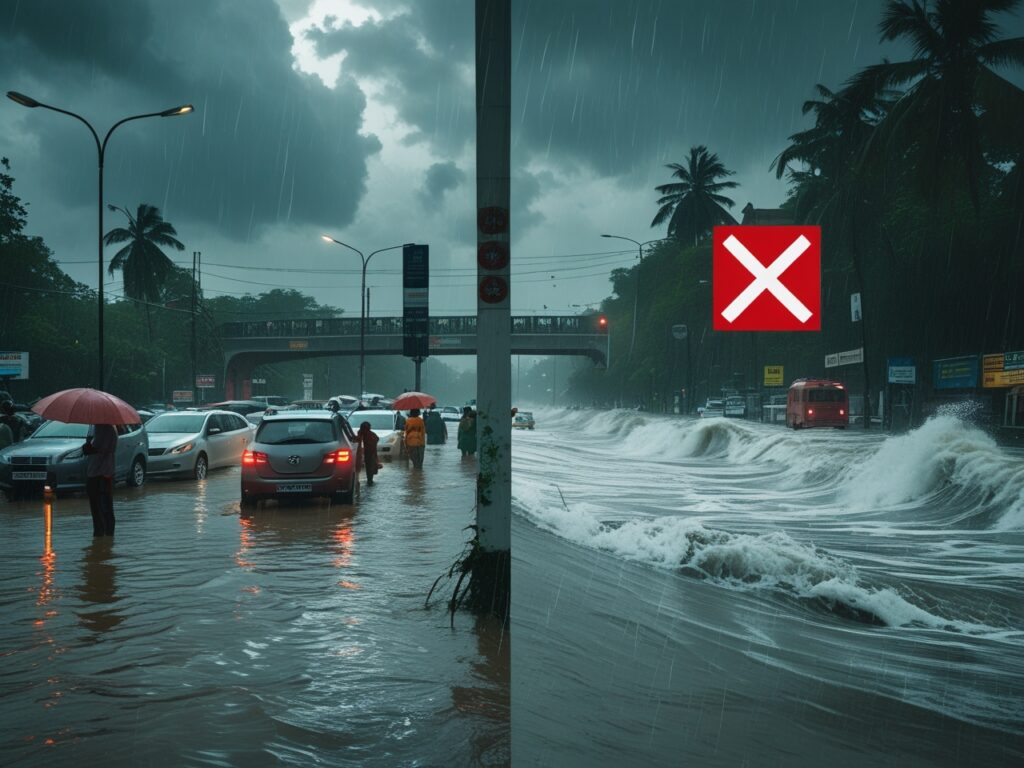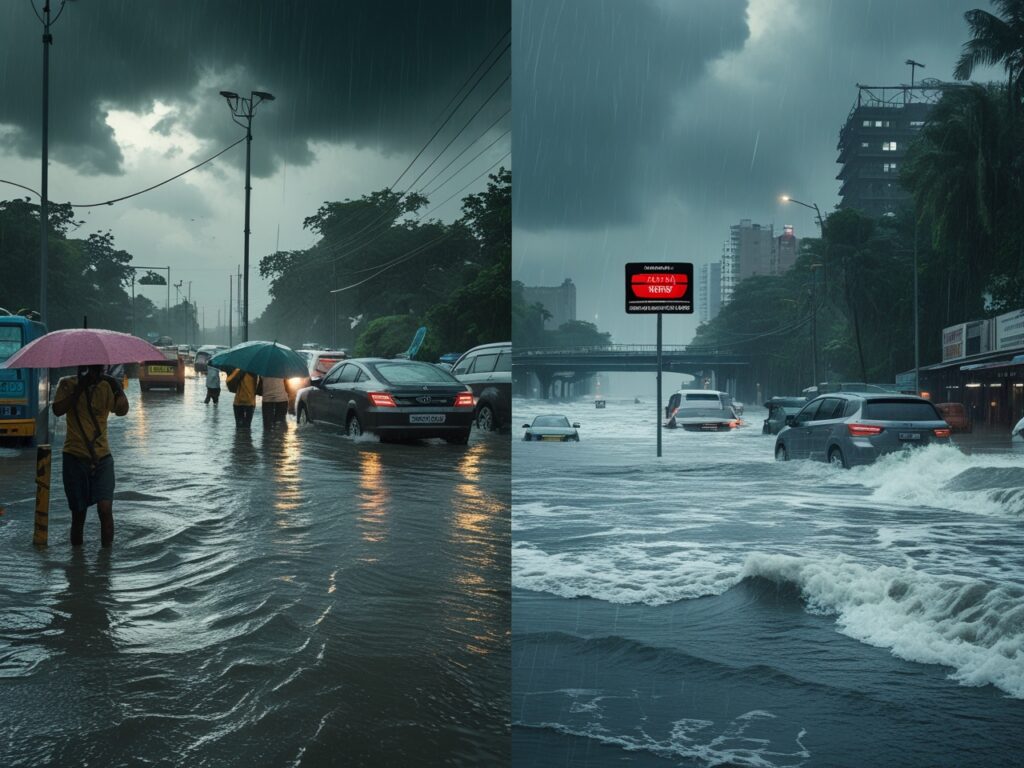New Delhi/Mumbai, June 20, 2025 – The India Meteorological Department (IMD) has sent a strong advisory for the besieged populace of Delhi and Mumbai as the southwest monsoon gathers momentum and unleashes its wrath across the country. Delhi is expecting heavy rain in the next 48 hours while Mumbai has received a serious red alert which indicates the threat of extremely Delhi heavy rainfall, flash floods, and widespread disturbance. The weather forecast comes as the monsoon season, which is already underway, continues to lash major cities raising the likelihood of urban flooding and issues with government infrastructure.

Delhi Heavy Rainfall Sparks Concern
Heavy rainfall is expected to hit the national capital from Friday, June 20, 2025, with IMD predicting 50 – 80 mm of rain until Sunday. The monsoon arrived in Delhi in the first week of June, bringing with it light rain and moderate showers previous week; but the intensity of rain is anticipated to increase any minute now, and with it comes the likelihood of waterlogging in low-lying places such as Connaught Place, ITO, South Delhi. The IMD yellow alert for Delhi-NCR area, carries a message about thunderstorms, gusty winds (30 – 40 km/h), cloudy skies, and with that message a plea to keep unnecessary travel to a minimum and to stay tuned to weather alerts.
Authorities have put special teams (drainage clearance teams) to motion to avoid water-logging situations especially with the areas prone to waterlogging. “I have put all the men that I can on stand-by to work around-the-clock to keep drains clear and to check that all pumps operate,” stated one Delhi Municipal Corporation official. City dwellers are also advised to secure loose things outside in light of possible electrical outages due to inclement weather.
Mumbai Pricing Of A Red Alert
In Mumbai, it is worse. The IMD (Indian Meteorological Department) issued a level red—its highest warning— for June 20 and 21 2025. Over the next 24 hours, the city is expected to face over 200 mm of rain in that period, triggering concerns about flash floods, complete paralysis of traffic and disruption of public transport services. This alert comes immediately after earlier this week reports of 300—400 mm in parts of Mumbai, showing how vulnerable the city is to monsoon chaos.

The Brihanmumbai Municipal Corporation (BMC) deployed emergency response teams complete with high-capacity pumps in flood-prone areas like Andheri, Kurla, and Sion. As for train services, these may be delayed or cancelled by the Central and Western Railway lines. Lead Flight Operations at Chhatrapati Shivaji Maharaj International Airport may also be affected due to into low visibility. “We urge Mumbaikars to be indoors unless compelled otherwise,” said the BMC, who warned residents of elevation in coastal areas like Marine Drive and Worli from high tides and inundation.
Monsoon 2025: The Season of Extremes
The effect of increasingly intense monsoon activity comes from a much broader weather pattern, fueled by a low-pressure system over the neighbouring Arabian Sea that had previously directed heavy rainfall across the UK and in Gujarat and Maharashtra. The IMD said this low-pressure system is now weakening, but is still causing rainfall activity across Delhi, East Rajasthan, and parts of Northern India.
Furthermore, Climate Change is causing monsoon extremes to become no longer predictable or manageable, leading to extreme variability and intense events.
Dr. Anjali Sharma, a meteorologist with the Indian Institute of Tropical Meteorology, said: “The monsoon this year is very reactive with more variability and sudden intense rainfall, making responding far different to previous years”. Urban centres like Delhi or Mumbai are going to need a lot of upgrades to infrastructure to manage this situation. She also emphasized that early warning systems and community preparations were vital to reduce the impact and potential loss.

Safety Advice for Residents
- Delhi: Avoid areas flooded & with standing water. Remain abreast of traffic announcements before driving and keep all emergency contacts close at hand. In the context of home, it is useful to ensure that drainwater drains away (bad water) from the home environment in flood-prone areas.
- Mumbai: Stay indoors during the alert (red) period, keep away from coastal areas (high tide-related risks during red alert), regularly check on BMC advisories for real-time alerts from them. Properly check provided and verified Emergency ready kits, including food, potable water, and medical supplies.

